
Today I want to talk about the A minor scale on violin and cover three types, A natural minor scale, A harmonic minor scale, and A melodic minor scale.
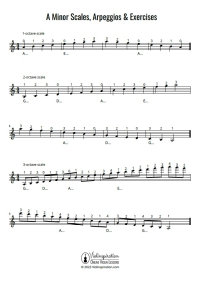
A Minor Scales & Arpeggios
What Are the Notes of the A Minor Scale on the Violin?
A minor is the natural minor of the C Major scale – they are corresponding scales or in music theory, they are called relative keys.
The notes of the C Major scale are C, D, E, F, G, A, and B. A is the sixth note of the scale, so the notes of the A minor scale are A, B, C, D, E, F, and G. As you can see, the notes are the same in each corresponding scale.
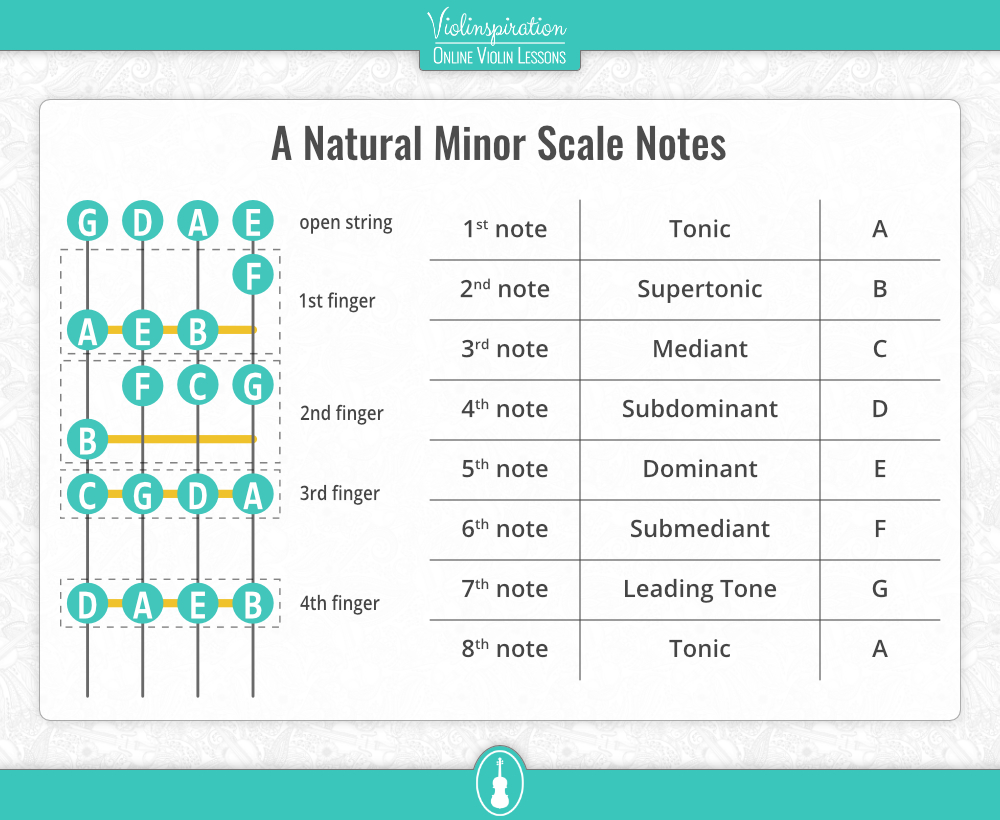
Every major scale has a corresponding natural minor scale, which is a scale consisting of the same notes but starting on a different pitch.
How do you determine the corresponding major and minor scales?
The sixth note of any major scale is the tonic or first note in the corresponding natural minor scale.
How do you know if you are playing a piece in the major or the corresponding minor scale?
Many of my students ask me this question. An easy way to tell is by looking at the last note of the piece. Most musical compositions end on a tonic note. That is the first note of the scale. So if you do not see any sharps or flats on your sheet music and want to know if you are playing in C Major or A minor, look at the last note. If your piece ends in A, you are playing in the key of A minor. Conversely, if it ends in C, it is usually C Major
How Do You Play the A Minor Scale on the Violin?
A natural minor scale

First, you can start with a one-octave scale.
Play the A on the open string, next put your first finger on the first tape (if you have tapes) for B, a low second finger for C, and a third finger for D. Then switch to the E string. After playing the open E string, put your first finger below the first tape to play F and follow by playing G with a low second finger and A with the third finger.
Easy? Then try the two-octave scale!
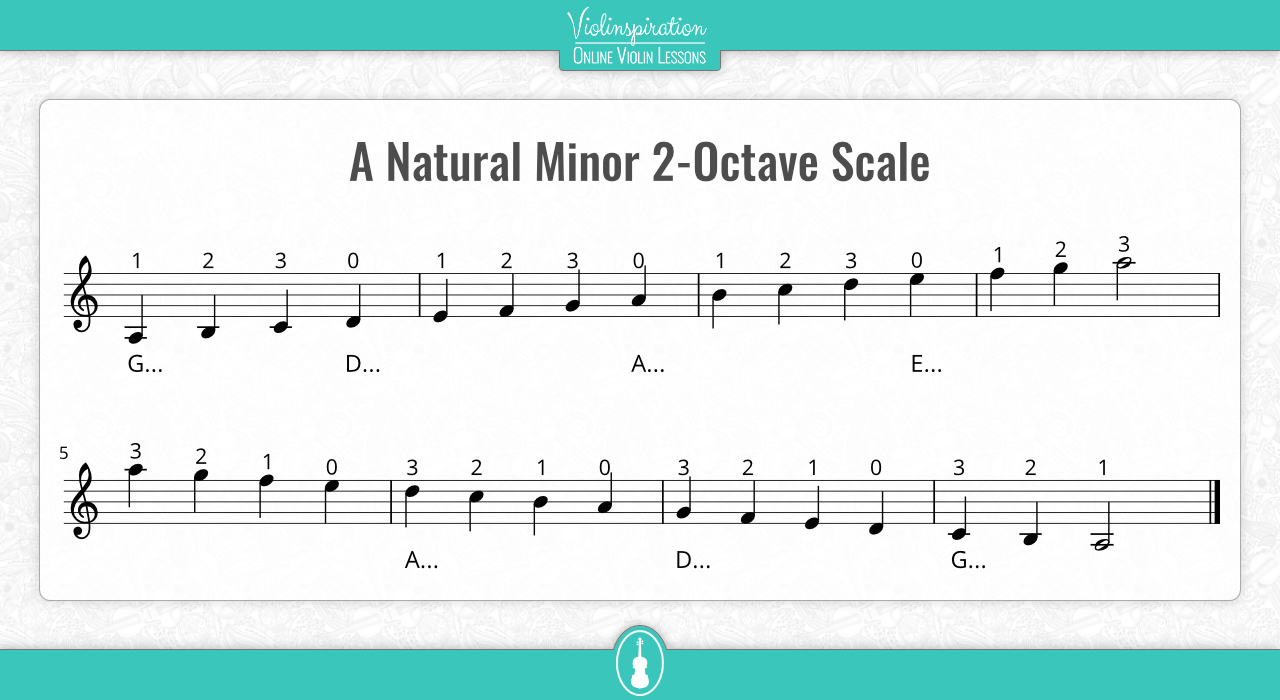
A harmonic minor scale
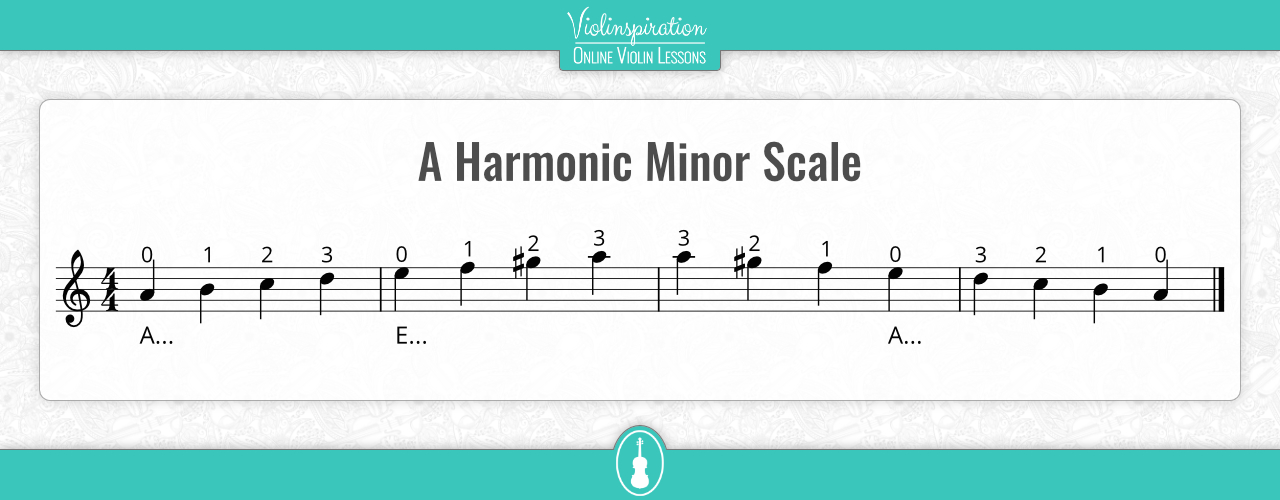
The harmonic minor scale is the most commonly used in Western music. Basing itself on the natural minor scale, but the 7th scale degree is raised by a semitone.
A melodic minor scale
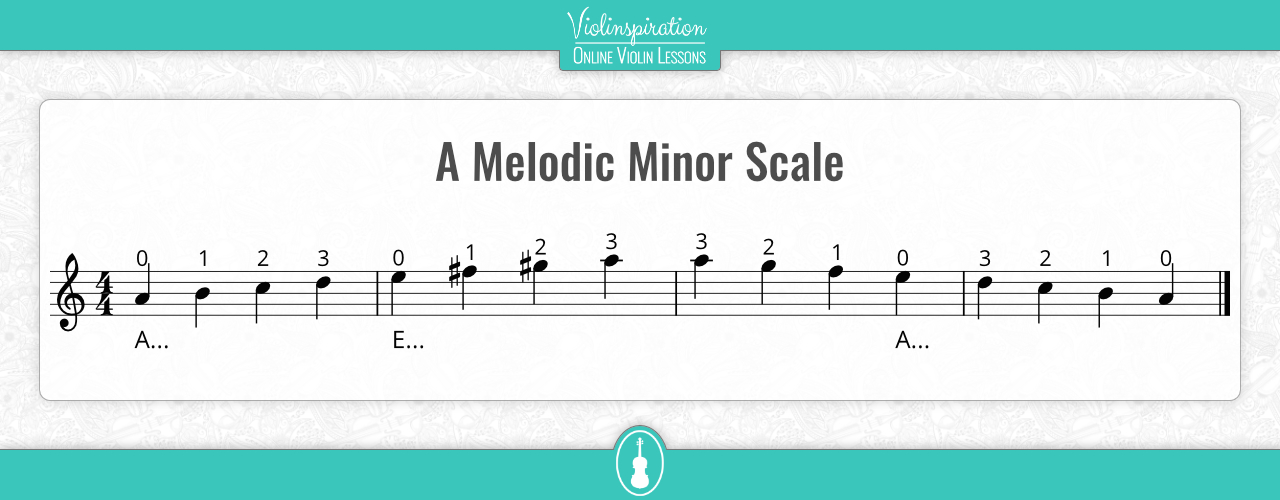
Melodic minor scales are different ascending and descending. Going up the scale, you raise the 6th and 7th notes by a half step and lower them back to the natural minor form when you go down the scale, canceling the accidentals.
How Do You Play A Minor Arpeggio on the Violin?
Follow the violin tabs to play 1-, 2-, or 3-octave A minor arpeggio!
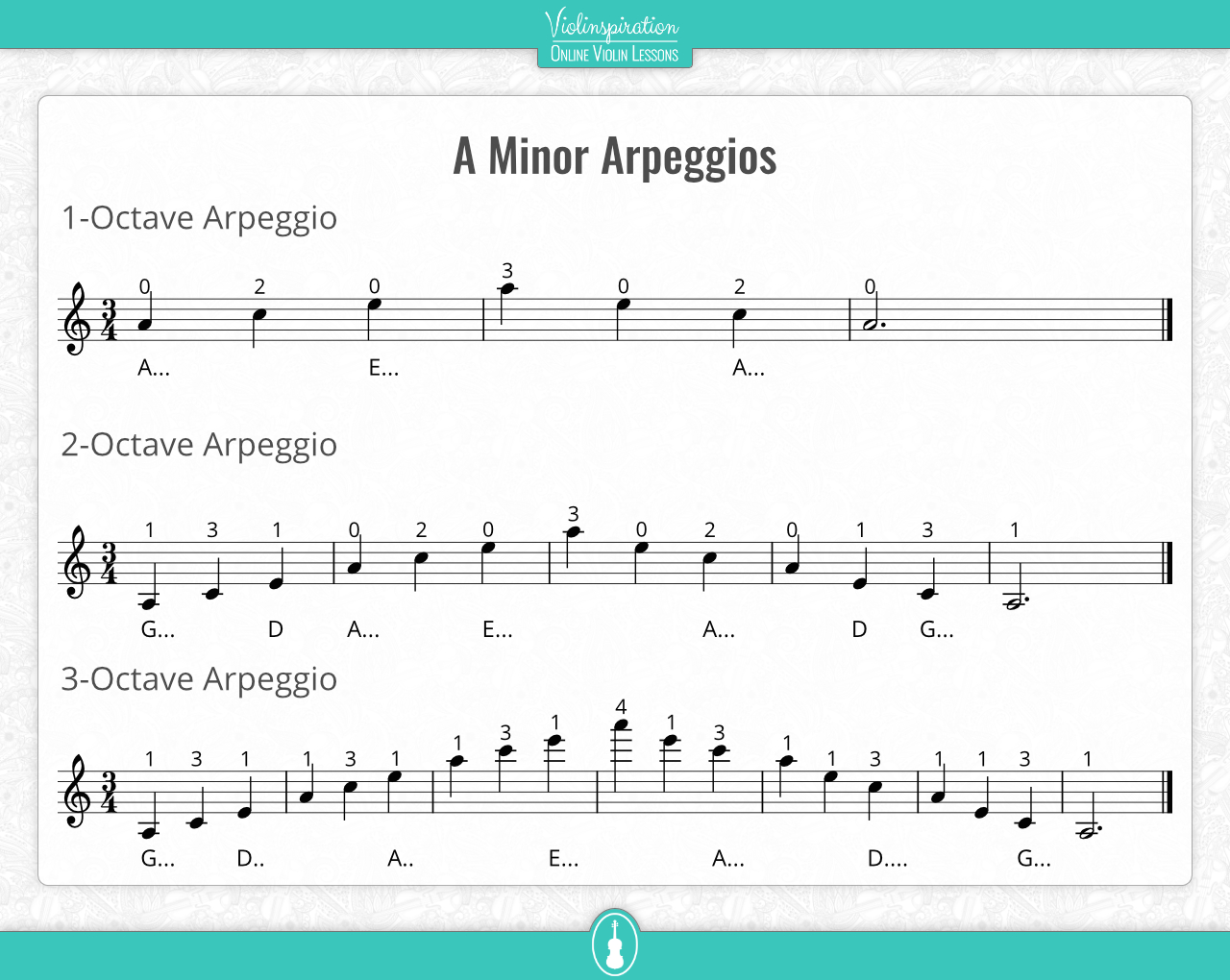
Playing the first, third, and fifth notes of a scale in ascending or descending order is an arpeggio on the violin. They are great for practicing intonation because your fingers skip over strings and move around the fingerboard. You can often find the note progression in the violin repertoire.
Three-Octave A Minor Scale on the Violin
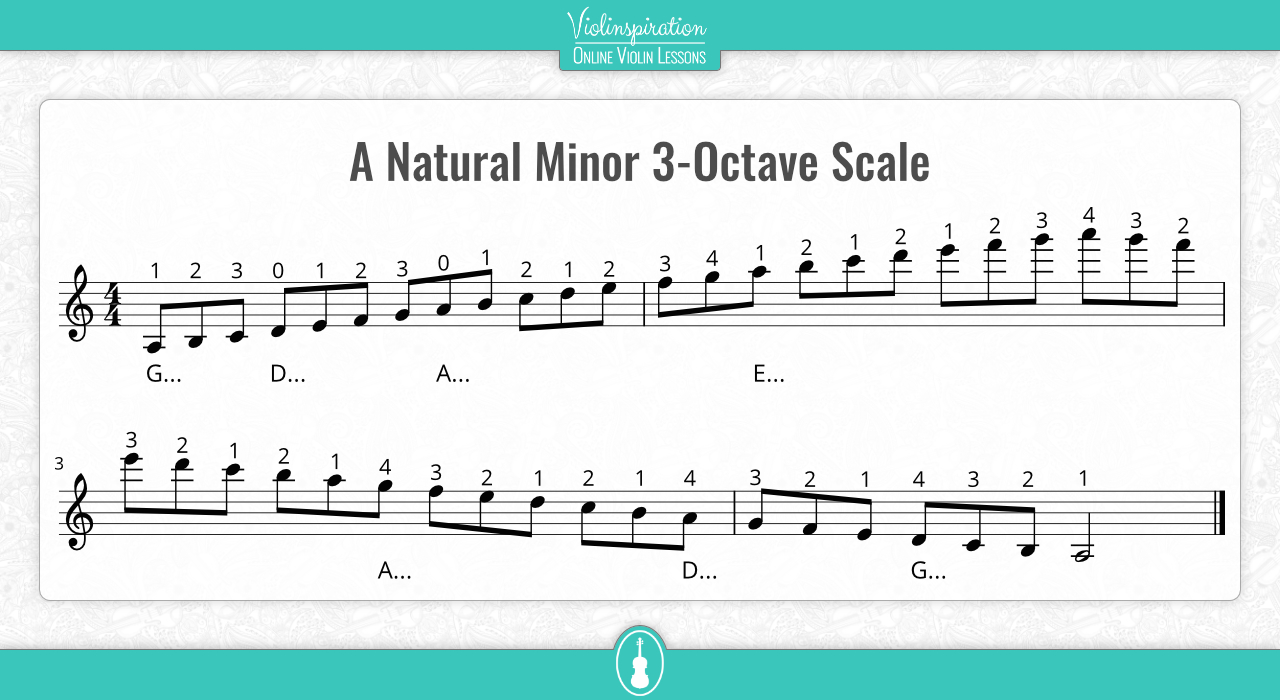
Your practice will get exciting when you play a three-octave scale because you shift several times up the fingerboard into the seventh playing position – to do it and play in tune is a triumph for any intermediate to advanced player!
Sheet Music of the A Minor Scale, Arpeggio, and a Bonus Exercise
Download the free sheet music and a bonus exercise below:

A Minor Scales & Arpeggios
4 Well-known Pieces in A Minor
Let’s listen to some of the famous pieces written in A Minor.
Tarentella Napoletana
Associated with Naples, Italy, this is a traditional Italian song made notable in the movie The Godfather (if you’d like to learn the Godfather theme, click here and enjoy my tutorial).
Concerto in A Minor, Op. 3, No. 6, RV 356 – A. Vivaldi
Bach’s concerto consists of three movements, quick-slow-quick, similar to the pattern set by Vivaldi.
Tam Lin – The Glasgow Reel
Davey Arthur wrote this fun Celtic fiddle tune around 1974. Though he gave it the title Tamlin, it goes by several names, such as Tam Lin, The Glasgow Reel, and The Howling Wind.























